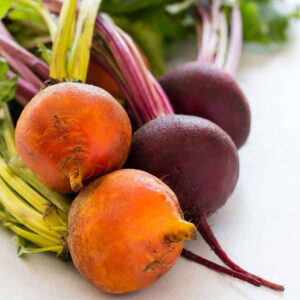Conventional deicers can wreak havoc on ecosystems.
With all this snow it’s important to consider water quality when salting driveways and walkways. Most communities send out big trucks that dump loads of salts on roads. Many homeowners will also add salts to sidewalks to keep people safer from slip hazards. Conventional deicers like salts often wash into nearby streams and can create aquatic dead zones that suffocate plant and aquatic life.
Many municipalities are coming up with new methods to melt snow and ice or prevent it from sticking to walkways and roads. Here in Wayne County, sand has proven to be an excellent alternative. There are many options found in the home that contain even more eco-friendly ingredients, including brines, coffee grounds, and even sugar beet juice.
Here are a few:
Alfalfa Meal
Alfalfa meal is mostly used as a fertilizer, but it’s also effective for melting ice. Alfalfa meal has a grainy texture that also offers more traction as you walk. Although a deicer, use this alternative in moderation. Excessive nitrogen can leach into waterways and could lead to algal blooms.
Sugar Beet Juice
Sugar beet juice is a popular ice melt option that lowers the freezing point of ice and helps deicers stick to the ground better. Beet Juice is safe for pets and not corrosive to vehicles. On its own, sugar beet juice isn’t as effective as other deicers, but it does reduce the amount of conventional deicers you would need to clear up walkways. This alternative is gaining traction in Canada. ( read article from Modern Farmer)
Coffee Grounds
Don’t toss those Keurig pods of coffee grounds. These grounds can help with melting ice, plus they add traction to the walkways.
Brines
That extra pickle juice in the jar? If you’re not going to drink it, maybe you can use it to clear your frosty sidewalks. In another effort to turn waste into something useful, people have creatively used brines like pickle or cheese brine instead of road salts.
Baking Soda
This alternative works in a similar way to salt. It lowers the freezing point of water when it permeates it, working well in environments that have cold weather, but not extremely cold weather.
Epsom Salt
This is a great option for ice melt because it’s as effective as table salt and rock salt, but it’s much safer to use around plant life. Mix the Epsom salt with some sugar for the best results.
Another consideration is the placement of snow. When piles melt there is a potential for flooding. If your home is on a grade or hill, shovel snow so that it doesn’t roll toward your home when it melts. Always keep drainage areas around your home clear of snow and ice build-up. Make certain to locate snow piles in areas that gradually penetrates into the ground when piles melt. Never shovel snow into a street drain.
Parts of this post were taken from an article written by Paige Bennett from EcoWatch To read the full article visit https://www.ecowatch.com/sustainable-alternatives-winter-salts-2656111075.html
Let us know if you like these posts, feedback is appreciated, email maxine@waynenyswcd.org


